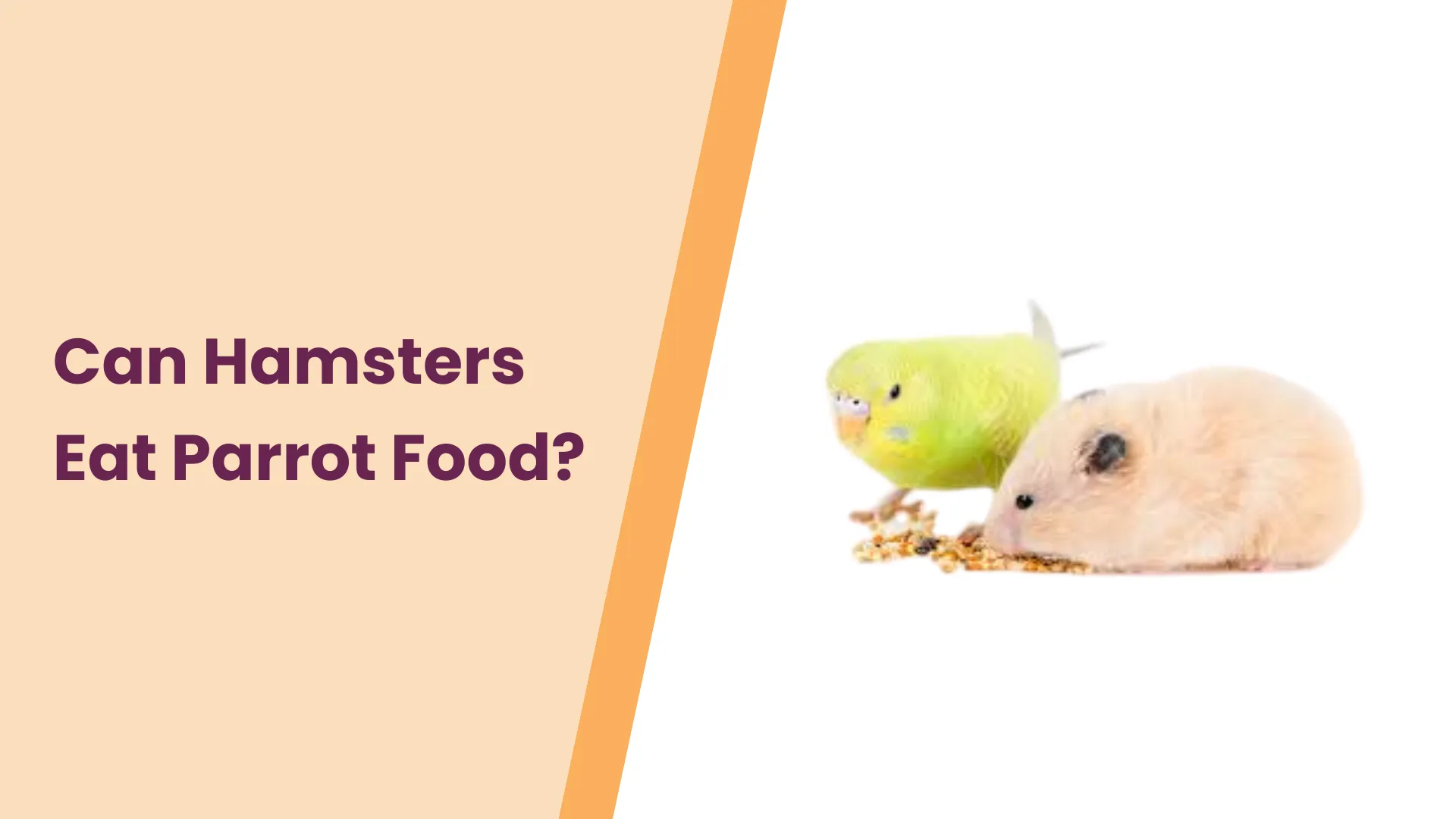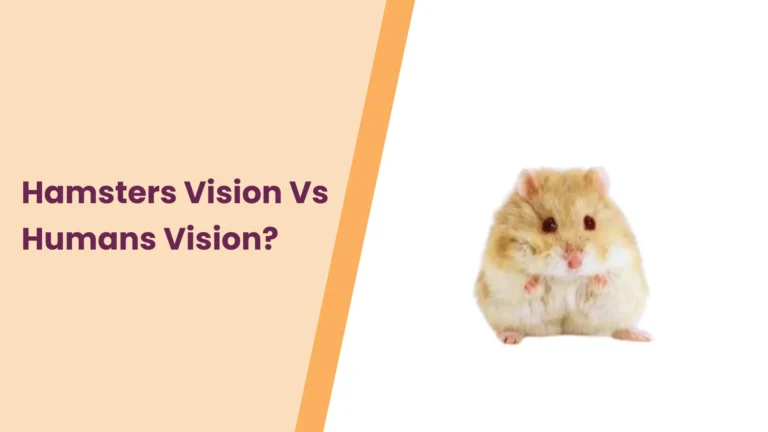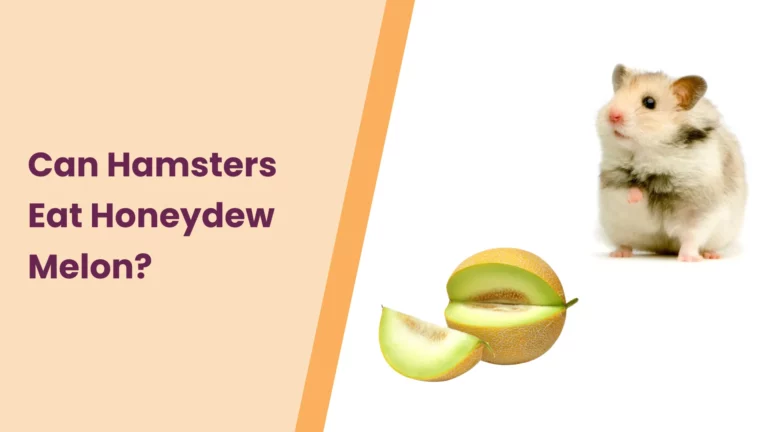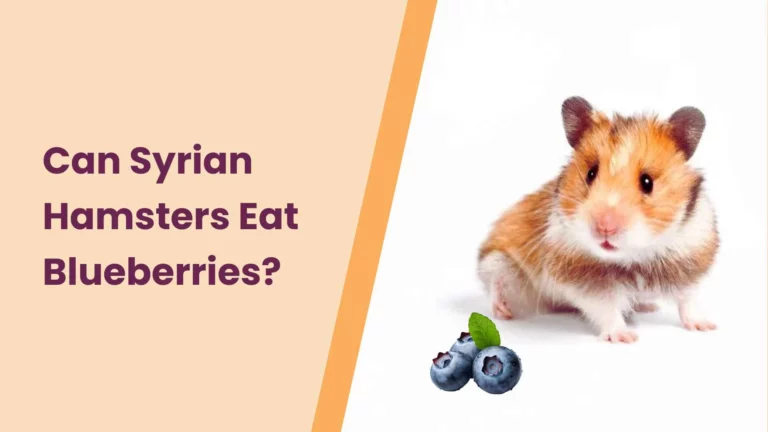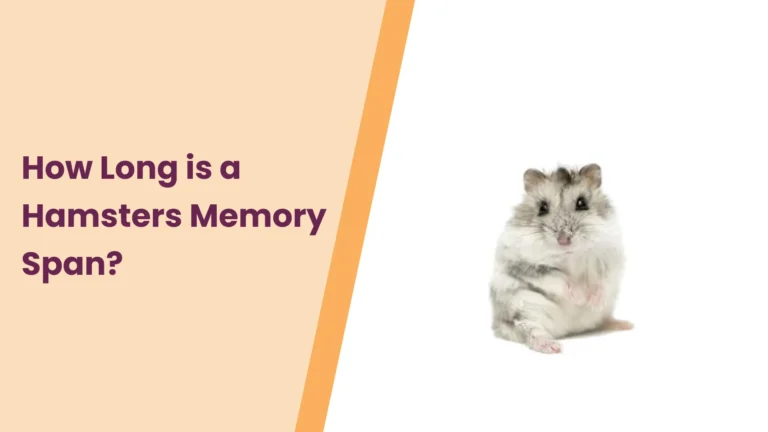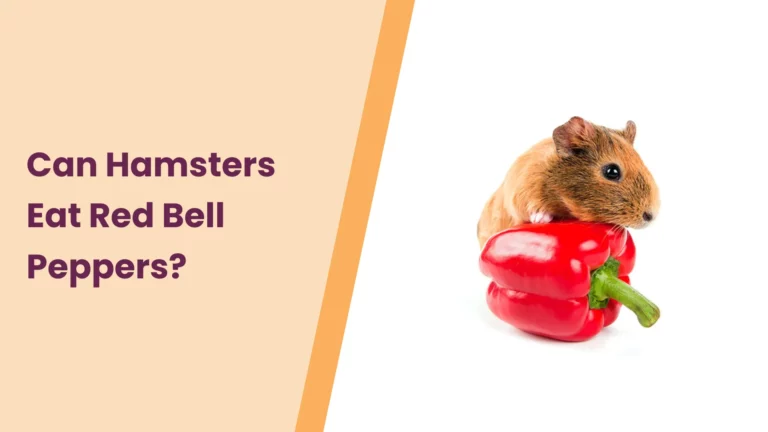Can Hamsters Eat Parrot Food? – All You Need To Know
Welcome, fellow hamster enthusiasts, to another exploration into the intriguing world of our furry friends. Today, we embark on a culinary quest, addressing a question that has piqued the curiosity of many hamster caretakers: Can our pint-sized companions indulge in the colorful array of parrot food?
As dedicated caregivers, we’re always seeking ways to pamper our hamsters, ensuring they lead happy and healthy lives.
Join us as we delve into the nuances of hamster nutrition, decipher the composition of parrot food, and uncover whether this feathered friend fare is a whimsical treat or a potential hazard for our beloved hamster pals.
So, buckle up, and let’s navigate the culinary crossroads where hamsters and parrots meet!
Understanding Hamster Dietary Needs
In the wild, our miniature companions are foragers, scurrying about in search of a diverse array of seeds, grains, and occasional insects to satisfy their nutritional cravings. As responsible hamster guardians, it’s crucial to mirror this natural diet in captivity for their optimal well-being.
Nutritional Essentials:
Hamsters, being omnivores, require a well-balanced diet that includes protein, fiber, vitamins, and minerals. Proteins aid in muscle development, fiber ensures a healthy digestive system, and a spectrum of vitamins and minerals contributes to overall vitality.
Diverse Palate:
Offering a varied diet is key to meeting these dietary needs. Hamsters relish a mix of high-quality hamster pellets, fresh fruits, and veggies. Each component serves a purpose, creating a harmonious symphony of nutrients for our pint-sized pals.
Hydration Matters:
Don’t forget about hydration! Fresh, clean water should always be available, supporting proper digestion and ensuring your hamster stays happily hydrated.
By comprehending the intricacies of your hamster’s dietary requirements, you empower yourself to make informed choices about their nutrition, setting the stage for a healthy and content hamster companion. Now, let’s explore whether the vibrant world of parrot food aligns with these nutritional principles.
Analyzing Parrot Food Composition
To unravel the mystery of whether our hamster friends can partake in the colorful banquet of parrot food, we first need to decipher the culinary tapestry of our feathered companions. Parrot food is a vibrant blend of seeds, grains, fruits, and nuts carefully crafted to cater to our avian friends’ nutritional needs.
Seed Spectacle:
Parrot mixes often boast a medley of seeds, including sunflower seeds, safflower seeds, and pumpkin seeds. Each seed contributes a unique nutritional profile, from heart-healthy fats to essential vitamins.
Grain Galore:
Grains like oats, barley, and millet are common components, providing a hearty source of carbohydrates for energy. These grains contribute to the robustness of parrot food and add a delightful crunch to their meals.
Fruit Fiesta:
Parrot food can be a carnival of colors with dried fruits such as bananas, apples, and papaya. While these fruity delights offer natural sweetness, they also introduce essential vitamins and minerals into the avian diet.
Nutty Nutrients:
Nuts like almonds, walnuts, and pecans make occasional appearances, bringing healthy fats and protein to the mix. These nutrient-dense additions contribute to the overall nutritional balance of parrot food.
As we navigate the intricate blend of seeds, grains, fruits, and nuts that compose parrot food, we’ll gain insights into whether these elements align with the dietary needs of our hamster companions. So, buckle up for this gastronomic exploration as we decipher whether the avian feast can be a delightful addition to our hamster’s menu!
Can Hamsters Eat Parrot Food?
Now that we’ve journeyed through the gastronomic landscapes of both hamsters and parrots, the lingering question remains: Can our hamsters indulge in the delightful spread designed for parrots? – Well, if you’re looking for a short answer, it’s a no. Some food items can overlap, but still it’s very crucial to understand to keep these diets separate.
Nutritional Crossroads:
The answer lies at the intersection of nutritional compatibility. While both hamsters and parrots share a love for seeds and grains, it’s crucial to assess whether the specific composition of parrot food aligns with the nuanced dietary needs of hamsters.
Balancing Act:
Hamsters thrive on a diet that balances proteins, fibers, and essential nutrients. Parrot food, with its seed-centric composition, can offer some nutritional benefits. Still, caution is warranted as certain ingredients may be too rich or pose potential health risks to our tiny companions.
Proceeding with Care:
Before introducing parrot food into your hamster’s diet, consider the individual needs and sensitivities of your furry friend. Moderation is key, as an abrupt change in diet can upset their delicate digestive balance.
Observation Matters:
Keep a watchful eye on your hamster’s reaction to the introduction of parrot food. Monitor for any signs of allergies, digestive issues, or changes in behavior. If all seems well, you might have just stumbled upon a whimsical addition to your hamster’s culinary repertoire.

Keep a watchful eye on your hamster’s reaction to the introduction of parrot food. Monitor for any signs of allergies, digestive issues, or changes in behavior. If all seems well, you might have just stumbled upon a whimsical addition to your hamster’s culinary repertoire.
As we navigate this culinary crossroads, let’s weigh the pros and cons, considering the nutritional harmony that parrot food can bring to our hamster’s diet. So, stay tuned as we unravel the verdict on whether parrot food deserves a place in the hamster’s dining hall!
Risks and Concerns: Navigating the Parrot Food Terrain for Hamsters
Embarking on the potential inclusion of parrot food in your hamster’s diet requires a discerning eye and a cautious approach. While the vivid tapestry of seeds and nuts in parrot food may seem enticing, it’s essential to be aware of potential risks that could pose challenges to your petite companion’s well-being.
1. Fatty Overload:
Parrot food, rich in seeds and nuts, may tip the scale towards an abundance of fats. Hamsters, being prone to obesity, need a careful balance to maintain a healthy weight. Excessive fat intake could lead to health complications, so moderation becomes our guiding principle.
2. Allergenic Ingredients:
Just like us, hamsters can have individual sensitivities. Some components of parrot food, such as certain seeds or dried fruits, may trigger allergies or digestive distress. Keep a keen eye on any adverse reactions as you introduce new elements to their diet.
3. Dental Dilemmas:
While hamsters love to gnaw on seeds, the hardness of some varieties in parrot food might pose a risk to their dental health. Ensure that the seeds are appropriately sized and don’t present a challenge that could lead to dental issues.
4. Nutrient Imbalance:
Parrot food may lack some of the specific nutrients that hamsters require in their diet. Depending solely on parrot food could lead to an imbalance, compromising your hamster’s overall nutrition.
5. Monitoring and Adaptation:
As with any dietary change, a watchful eye is paramount. Introduce parrot food gradually, monitor your hamster’s health, and be prepared to adapt based on their individual needs and preferences.
In our quest to provide the best for our hamster companions, it’s essential to weigh the potential risks against the benefits of introducing parrot food. As we tread carefully through these concerns, stay tuned to discover practical tips and alternatives that strike the right balance for your furry friend’s well-being.
Safe Parrot Food Options for Hamsters: Finding Harmony in the Feast
As we navigate the culinary crossroads for our hamster companions, the prospect of introducing parrot food might still hold allure. Fortunately, there are safe and nutritious options within the vibrant spectrum of avian treats that can harmonize with our hamster’s dietary needs.
1. Selective Seeds:
Opt for parrot food mixes with smaller, softer seeds like millet and canary grass seeds. These options are gentler on your hamster’s delicate teeth and offer a delightful crunch without the potential hazards of larger, harder seeds.
2. Dried Fruits in Moderation:
While certain dried fruits are a colorful addition to parrot food, ensure they are free from added sugars and preservatives. Offer these fruity delights sparingly, as hamsters appreciate the sweetness but moderation is key to preventing dietary imbalances.
3. Nutritional Variety:
Look for parrot food blends that include a diverse range of seeds, grains, and nuts. A varied mix can provide a balance of nutrients that align more closely with the dietary needs of your hamster.
4. Homemade Mixes:
For the hands-on hamster enthusiasts, consider creating your own hamster-friendly parrot food mix. Combine small, safe seeds, a touch of dried fruits, and nuts in moderation to tailor the blend to your hamster’s preferences.
5. Monitor and Adjust:
As with any dietary change, keen observation is crucial. Monitor your hamster’s response to the introduction of parrot food, and adjust the quantity based on their health and individual taste preferences.
By carefully selecting and introducing these safe parrot food options, you can add a dash of variety to your hamster’s menu while ensuring their nutritional needs are met. Stay tuned as we explore further tips and tricks to create a gastronomic haven for your hamster companion!
Recommended Hamster Diet: Crafting a Culinary Haven for Your Furry Companion
As devoted caretakers of these pint-sized bundles of joy, it’s paramount to curate a diet that not only tantalizes their taste buds but also fulfills their nutritional needs. Here’s a guide to the recommended hamster diet, ensuring your little friend thrives in the world of flavors and nutrients.
1. High-Quality Hamster Pellets:
Start with a foundation of high-quality hamster pellets. These nutritionally balanced nuggets provide essential vitamins and minerals, ensuring your hamster receives a solid nutritional base.
2. Fresh Fruits and Vegetables:
Introduce a rainbow of freshness to your hamster’s diet with a variety of fruits and vegetables. Offer small portions of safe options like apples, carrots, and broccoli to infuse their diet with vitamins and fiber.
3. Wholesome Grains:
Include wholesome grains like oats, barley, and wheat in their diet. These grains contribute to the fiber content, promoting a healthy digestive system and providing a source of sustained energy.
4. Lean Proteins:
Incorporate lean proteins into your hamster’s diet through sources such as mealworms, crickets, or a small amount of cooked chicken. Protein is crucial for muscle development and overall well-being.
5. Fresh Water Always:
Ensure a constant supply of fresh, clean water for your hamster. Hydration is key to their health, and a readily available water source supports their bodily functions and aids in digestion.
6. Treats in Moderation:
While treats can add excitement to your hamster’s day, offer them in moderation. Seeds, nuts, and small pieces of dried fruits can be delightful occasional additions, but the emphasis should be on a balanced and complete diet.
By crafting a menu that combines these elements, you create a culinary haven for your hamster. This recommended diet not only caters to their nutritional needs but also adds a touch of gastronomic delight to their daily lives. Stay tuned as we continue to explore the fascinating world of hamster care and well-being!
Conclusion
As we bid adieu to this exploration into the world of hamster nutrition, it’s clear that balance is the key to our furry friend’s well-being. While the allure of parrot food may beckon, the nuanced needs of hamsters demand a thoughtful approach. Embrace the diversity of safe parrot food options but always prioritize their recommended diet—crafted with high-quality pellets, fresh fruits, veggies, and lean proteins.
Remember, every hamster is a unique gastronomic explorer, and your keen observation will guide their culinary journey. Treats in moderation, a variety of textures, and a touch of homemade flair can transform their dining experience.
So, fellow hamster enthusiasts, let’s celebrate the joy of caring for these tiny companions. Explore, observe, and tailor their diet to their individual tastes. For further insights into the whimsical world of hamster care, stay tuned to our blog. Happy hamster caregiving!
“Your thoughts and experiences are invaluable in our shared journey of caring for these delightful hamster companions. Have a question, a success story, or a unique tip to share?
Drop a comment below, and let’s create a vibrant community of hamster enthusiasts! Your insights could be the key to unlocking new discoveries for fellow caretakers. Don’t keep the wisdom to yourself—share this post on your favorite platforms to extend the conversation.
Whether it’s on forums, social media, or with friends who share the joy of hamster parenting, let’s spread the love and knowledge. Together, we make hamster care an even more enriching adventure!” – HamsterPit.

